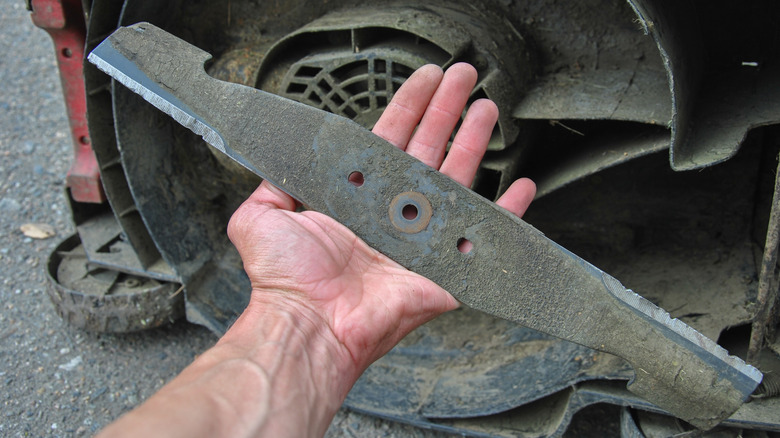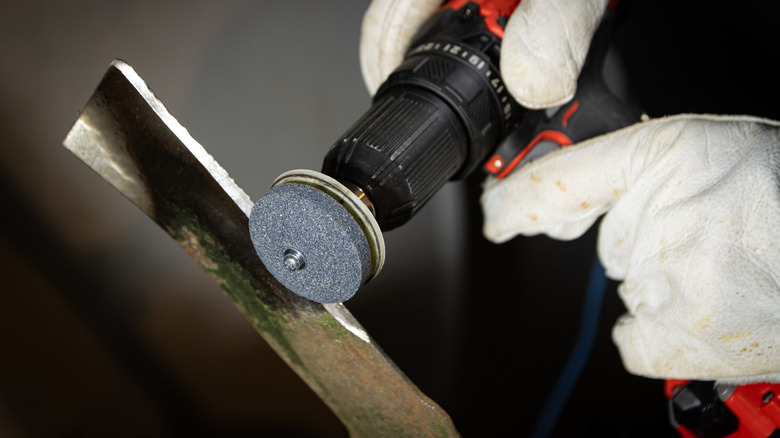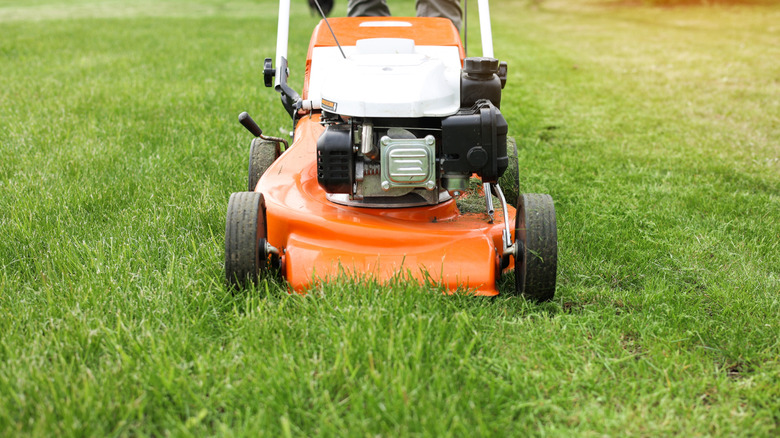Do New Lawn Mower Blades Come Sharpened? What To Know Before You Buy
When using a lawn mower, there are some pretty basic things one expects out of its performance. It should fire up without issue, whether it's a self-propelled push mower or a riding mower, its wheels should move freely, and, perhaps most importantly, the blade should cut through grass with ease. After all, what's the point of a lawn mower that does a poor job of cutting grass? Over time, it's inevitable that your mower's blade will wear out, and a new one will be needed. Regardless of how often you replace your lawn mower's blades, it's expected that the new blade will be sharpened and ready to go every time.
To many, it might seem that a new lawn mower blade is lacking in sharpness right out of the package. They can look dull and feel similarly to the touch, giving one the impression that they need to be sharpened and aren't ready for use. In reality, this is just the way fresh lawn mower blades are. The duller edge allows them to cut grass longer, and keep them in workable shape after unexpected run-ins with roots, rocks, and other debris. So, technically speaking, lawn mower blades do indeed come sharpened, even if it might not seem at first glance that they've reached their fullest sharpening potential.
If you're not sold on a relatively dull lawn mower blade, you don't have to use it as-is. You can always take it somewhere to be sharpened, or tackle it yourself. However, this choice comes with positives as well as negatives worth considering.
The good and bad of sharpening a lawn mower blade
They may not feel sharp in a traditional sense for a blade, but lawn mower blades will serve you just fine right out of the box. With that said, there's nothing wrong with taking a fresh blade and giving it an even sharper edge. In fact, it will most likely lead to improved performance. Is It Worth It on YouTube looked into this, comparing a dull used blade, a new unsharpened blade, and a new sharpened blade based on their lawn-cutting performance. Compared to the other two blades, a sharpened, fresh lawn mower blade is capable of, as one would hope, a more defined and cleaner cut that leaves the grass looking trim yet lively.
While this is all well and good, sharpening a lawn mower blade right out of the box isn't entirely positive. As great as the cut quality is from such a blade, it might not be worth compromising on its structural integrity. A finer edge means working down the metal, ultimately rendering the edge less durable than it would be otherwise. A thinner edge is more susceptible to damage should it encounter rocks, roots, and other solid obstacles during your mow. This increased wear and tear means you might have to replace your mower blade sooner than usual. Just as WD-40 can extend the life of your lawn mower, using the blade as-is right out of the packaging can also extend its life.
Whether you decide to sharpen your lawn mower blade out of the box is entirely your call. At any rate, though, it's important to be mindful of your blade's condition for the health of your mower and lawn alike.
The importance to mower blade care
No matter how you handle fresh lawn mower blades in regards to their sharpness, if you're taking care of your mower's blades at all, you're taking a big step in the right direction. Not practicing mower blade maintenance is one of many mistakes just about every homeowner makes with lawn mowers, and it can be hugely detrimental in the long run. Speaking to the health of your mower, an overly dull set of blades will negatively impact its lifespan. They will fail to cut grass efficiently, instead ripping it out when wrapped around the blade. If this is left unchecked, not only will mowing take longer to complete as the grass isn't properly cut, but the added strain on the mower's engine could lead to damage over time.
As far as the effects on your lawn itself, dull blades could lead to some serious problems. On the low end, your grass will be cut jaggedly by imperfect blade edges, leading to unsightly discoloration at the top of each blade as they struggle to heal and regrow properly. Making this situation even worse, grass cut, or rather torn, in such a way is prone to disease and even fungal infections. This can manifest itself as patches of dead or severely discolored grass or grass with fuzzy or slimy growth overtaking it. It can go away on its own, though widespread or otherwise persistent growths may require intervention on your part.
Getting the most out of your lawn mower and achieving the right grass trim both involve taking care of your mower blades. The benefits of letting them do their thing right out of the package, or carefully sharpening them a bit and monitoring their condition, cannot be understated.


